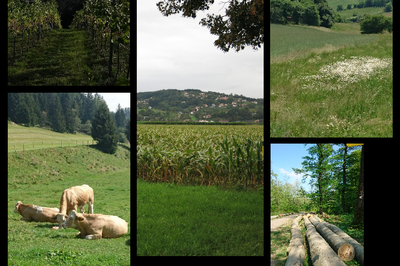How did Austrian judicial districts differ in the 1930s? The project creates a typology based on statistical data.
Funding
Dr. Wilfried-Haslauer-Bibliothek
Duration
January 2022 – June 2022
Principal Investigators
Ernst Langthaler, Jessica Richter and Ulrich Schwarz-Gräber
Researchers
Sebastian Ecker
Lukas Hayböck
Angelika Medek
Claudia Medek
Description
The project members draw up a typology of rural Austria around 1930, which will include as many diverse (agricultural, commercial-industrial, demographic, etc.) characteristics of rural areas as possible. Three statistical surveys from the 1930s are suitable for this purpose: the Farm Survey 1930, the Commercial Business Survey 1930 and the Population Census 1934. An explorative and multivariate method of analysis is used, which does not predefine areas of interest, but constructs important characteristics 'out of the data'. Moreover, several characteristics are compared simultaneously. Among other things, hierarchical cluster analysis is suitable for this purpose, which processes metrically scaled data and classifies the observation units into selective groups (clusters) according to similarity criteria. The statistically constructed typology of rural Austria is displayed in maps using a Geographic Information System (GIS). In addition to the statistical findings, the cartographic representation serves as a tool for contouring ‘typical’ regions for in-depth studies.
